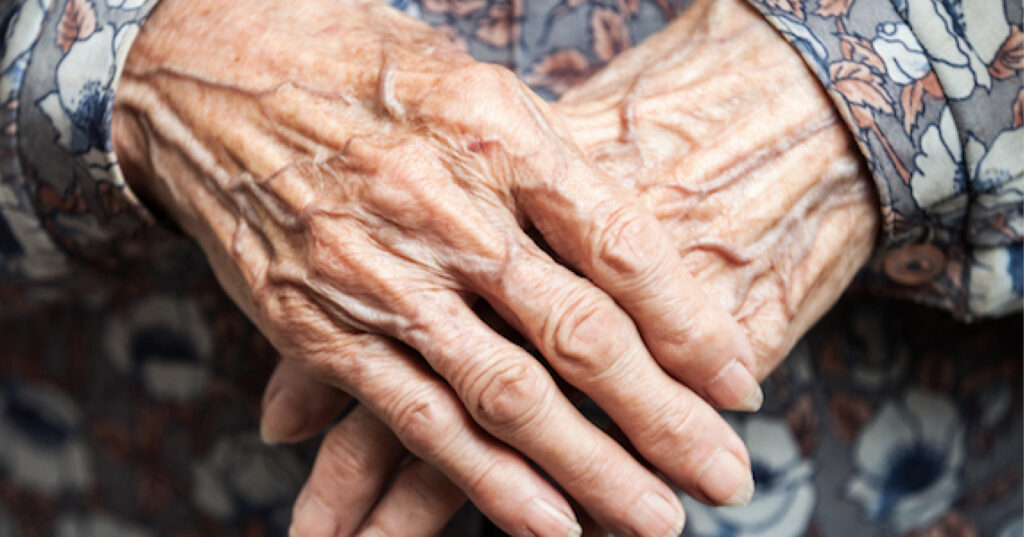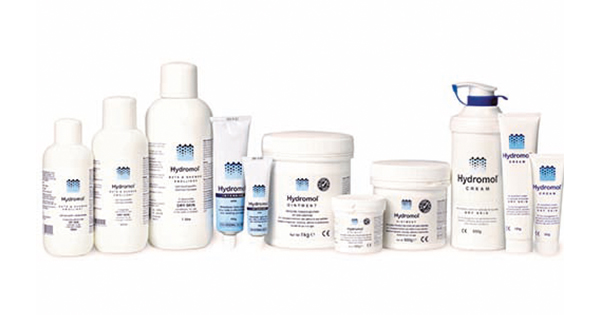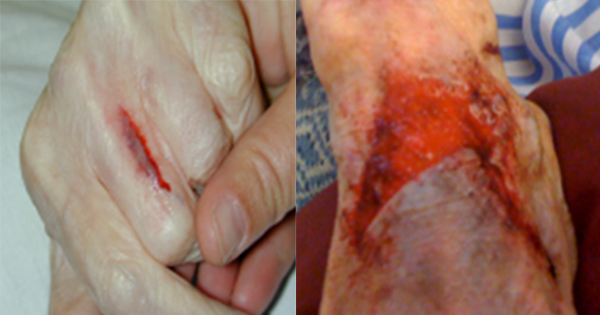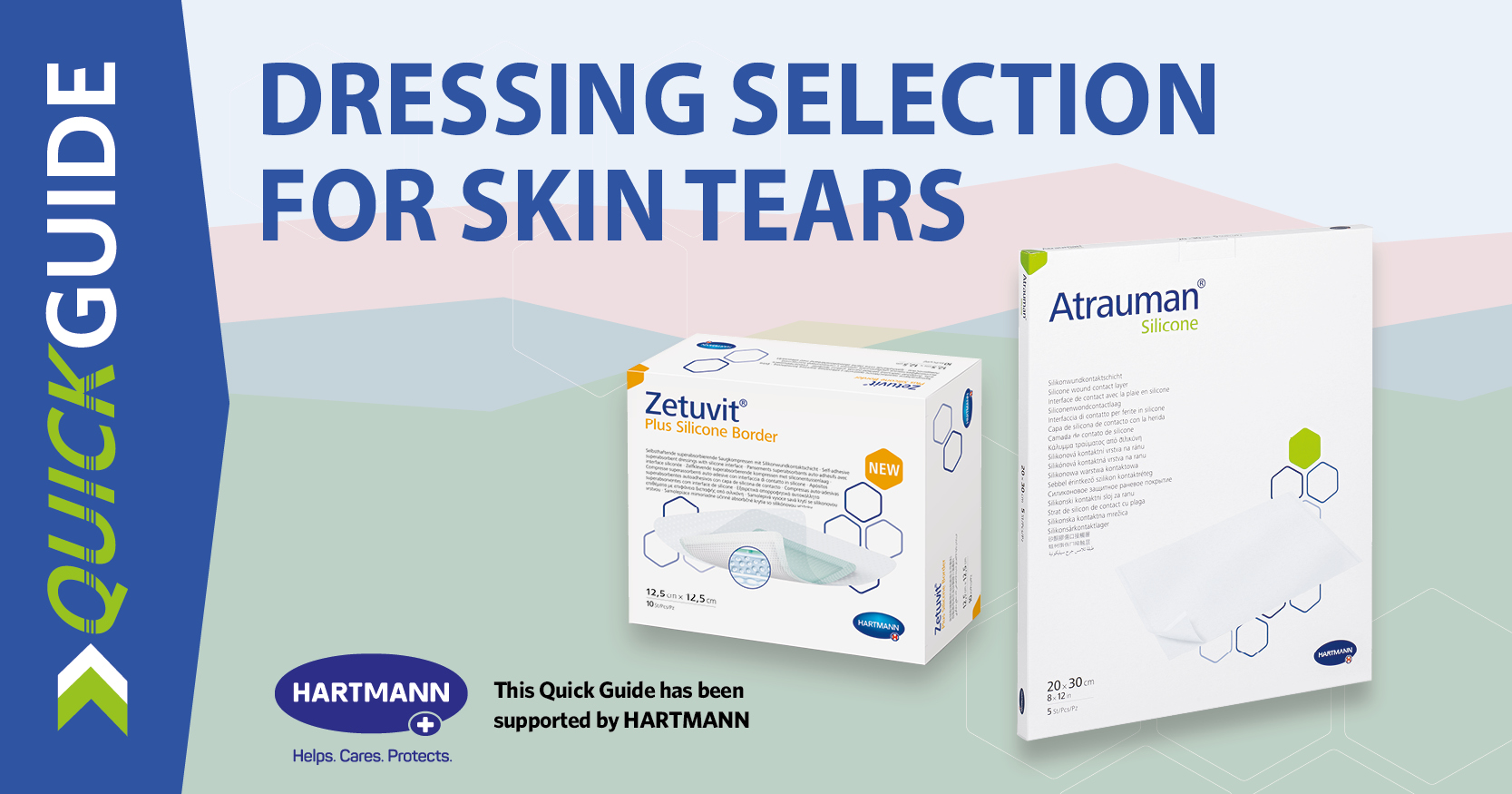Despite the high risk of skin tears in mental health settings, there remains a lack of consensus around skin tear prevention in this area. Reflective practice in a mental health setting has revealed the frequent occurrence of skin tears among frail older adults with advanced dementia and mental health disorders. Here we present a narrative review of the research related to skin moisturising as an intervention to reduce skin tears.
Several studies have identified skin tears as a significant global health problem (Bermark et al, 2018), which are frequently reported as being a traumatic wounds (Serra et al, 2018), and are associated with frail skin in the older population (Vanzi and LeBlanc, 2018; Woo and LeBlanc, 2018). Skin tears are often considered an insignificant traumatic wound (Vanzi and LeBlanc, 2018) that can affect any part of the body, but commonly occur on the extremities (Serra et al, 2018). However, studies have recognised skin tears as a notable wound and a patient safety issue that are associated with recurrent infection (Bermark et al, 2018; Brown, 2019), pain, poor quality of life (QoL), psychological distress (Idensohn et al, 2019), prolonged hospitalisation and increased health care costs (Vanzi and LeBlanc, 2018).
Researchers have investigated the prevalence of skin tears in different contexts (Awank Baki et al, 2021), with epidemiological studies estimating the prevalence of skin tears to range from 3.3% to 19.8% in acute settings (Bermark et al, 2018), 14.3% in palliative care, 5.5% to 19.5% in the community (Le Blanc et al, 2018), and 3.0% to 26% in long-term care settings (Woo and LeBlanc, 2018). Although, Woo and LeBlanc (2018) argue that data on prevalence of skin tears and healthcare cost are still inconclusive, the prevalence of skin tears may be underreported and could have a higher prevalence than pressure ulcers (PUs) in older adults (Hawk and Shannon, 2018). Evidence has strongly suggested the clinical importance of preventing skin tears, especially in older adults (Woo and LeBlanc, 2018; Awank Baki et al, 2021), in neonates and critically ill individuals (Woo and LeBlanc, 2018). Le Blanc et al, (2021) conducted a prospective study investigating risk factors of skin tears in older adults and they identified a range of areas that needed assessment, including any skin changes, haematoma, ecchymosis, chronic illness, malnutrition, dehydration, patient mobility, any history of falls, and altered mental health.
Predisposing factors
According to Kaba et al (2020) the skin of frail older adults is often dry, thin, and very fragile due to reduction in sweat, sebum, and collagen production, making older adult skin more susceptible to skin tears at minimal contact with individuals or objects. Additionally, a high risk of skin tears in mental health settings is associated with friction, shear, and skin trauma due to self-harm, aggression (Kaba et al, 2020), psychotropic medications, poor nutrition due to depression (Munro et al, 2018) and poor lifestyle (Firth et al, 2019). A lack of motivation also contributes to weakening immunity leading to fragility of the skin in mental health patients (Firth et al, 2019).
Cilluffo et al (2022) proposed that protective nursing interventions, including managing individuals with aggressive behaviour/cognitive impairment, falls prevention and transferring to a wheelchair could contribute to the development of skin tears in older adults, due to the frequency of handling service users, especially in a mental health setting (Firth et al, 2019; Kaba et al, 2020). Similarly, if procedures or moving and handling equipment are inappropriately selected, the risk of skin damage is increased (Cilluffo et al, 2022). Skin tears can be caused by trauma from medical devices and during patient transfers (Van Tiggelen et al, 2019) with Cilluffo et al (2022) suggesting nursing procedures such as personal care with soap and cold water, not applying moisturiser to protect dry skin, and the removal of adhesive dressings were associated with skin tears (Cilluffo et al, 2022). Inadequate manual handling, long nails, and wearing jewellery have also been associated with skin tear development in frail older adults (Cilluffo et al, 2022).
Skin assessment and the prevention of skin tears have received little attention from mental health professionals as they mainly focus on mental illness with limited attention on physical health care (Firth et al, 2019; Hinchliffe and Linthwaite, 2019). These factors in conjunction with the limited training of mental health professionals regarding skin tear prevention, can result in compromised skin integrity and wound complications in mental health settings (Hinchliffe and Linthwaite, 2019; Kaba et al, 2020). Identifying these risk factors with an interdisciplinary team approach is an important prerequisite for implementing targeted preventative measures alongside educating mental health professionals to effectively manage skin tears in frail older adults.
Prevention of skin tears
Preventive measures
Prevention strategies include reducing the frequency of bathing from daily to alternate days, using pH neutral soap substitutes, staff education, and adoption of skincare bundles (Davis, 2018). LeBlanc et al (2018) suggested adhesive remover should be used when removing adhesive dressings and tapes; care should be taken when handling patients, especially those taking medication that may affect the skin directly; and to always consider polypharmacy while ensuring timely referral to specialists, especially when caring for patients with sensory problems. Extra measures are also required to prevent skin tears in a patient with mental health needs such as dementia (Davis, 2018).
Carville et al (2014) conducted a cluster randomised controlled trial (RCT) over a six-month period to assess the effects of twice daily moisturiser on the reduction of skin tear incidence among residents from 14 aged care facilities in Western Australia. Cluster RCTs are trials in which the randomised subjects are groups of participants as opposed to individual participants in the traditional RCT (Fang and He, 2022). These trials have widely been used to address health care issues using real-world data (Fang and He, 2022). The residents were randomised to control and intervention group with 420 eligible residents enrolled in the intervention group and 564 residents in the control group. The intervention group received twice daily application of commercially available, perfume free, and pH neutral moisturiser lotion to their arms and legs while the control group received no standardised regime of skin moisturiser. This study found that among these residents, 252 in the control group and 172 in the intervention group had developed skin tears. The findings of this study showed that the application of twice daily moisturiser had reduced the incidence of skin tears by almost 50% among the residents residing in aged care facilities.
A retrospective study conducted by Brimelow and Wollin (2018) examined how care practises affected the skin integrity of residents, over a six-month period in two long-term care facilities in Australia. A total of 84 older adults were recruited from the two facilities (n=57 females; n=27 males) with a mean age of 82. There where 39 participants selected from facility one and 45 recruited from facility two. Analysis of variance (ANOVA) was used to reveal variations in the daily use of emollients (F=2.79; p=0.035). The study concluded that the use of daily emollients reduced the incidence of skin tears when compared with other skin care practices (Brimelow and Wollin, 2018). This study highlighted how care practices affected the skin integrity of residents, providing an insight on how to ensure care practices promote skin integrity in mental health settings.
Similarly, a prospective cohort study conducted over a twelve-month period in a large private hospital examined the effectiveness of twice daily application of emollients to reduce skin tears in older adult inpatient units (Finch et al, 2018). There were 762 participants aged between 73 and 100 years, with a history of skin tears, who received twice daily application of an emollient to their legs and arms (Finch et al, 2018). Skin tear incidence was compared with samples of 415 participants aged 65–96 years old, selected from two wards to identify the effectiveness of emollient application. There were 60 participants (8%) out of 762 in the intervention group who developed skin tears compared with 44 (11%) participants out of 415 in the control group (Finch et al, 2018). This shows a marked effectiveness in the use of emollients to prevent skin tears. However, there were discrepancies in the sample populations. The participants assigned to the intervention group were older with a higher degree of incontinence, and a higher risk of falls and cognitive impairment, compared with the control group (Finch et al, 2018). A limitation of this study was the small sample size contained in the two units. A larger sample size across several wards and other hospitals may make this study more generalisable. This study was supported by a systematic review that evaluated the impact of hygiene and emollient interventions for promoting skin integrity in older adults in residential care and hospital settings (Cowdell et al, 2020). The study concluded that regular application of emollient twice daily reduces skin tear development compared with standard care (Cowdell et al, 2020). Awareness of twice daily emollient application on the extremities of individuals in a mental health setting should aid prevention of skin tears.
An Australian single-centre, prospective, non-randomised, case control study among adults aged 70 years old and above, in two wards at a private aged care facility, examined the effectiveness of applying emollient twice daily with the aim of reducing skin tears over a period of three months (Mornane et al, 2021). The sample consisted of 388 participants, split between the intervention group (n=128) and the control group (n=260). A commercially available emollient was used in the study. Longitudinal data collection of intra- and post-intervention was undertaken to determine the effectiveness of the emollient moisturiser application using the Skin Tear Audit Classification system (STAR; Carville et al, 2007) with the authors concluding an observed reduction in the incidence of skin tears during the study (n=128). This reduction was not significant as the median scores were comparable irrespective of intervention: pre-intervention (median: 2.16, n=73) and post-intervention (median: 2.16, n=69, p=0.778). During this study, there was an extensive education and awareness campaign on the use of emollients in skin tears prevention. The relevant education focused around emollient application, which served as a catalyst to ensure care of frail skin was highlighted as a fundamental care intervention (Mornane et al, 2021). The findings of this study would support the implementation of the STAR classification system for reporting of skin tears and application of twice daily emollients on extremities of frail older individuals in a mental health setting. Wider education of staff on skin tear prevention, through twice daily application of moisturiser, would be beneficial to ensure care of older adults skin is highlighted as a fundamental aspect of care.
Conclusion
It is evident that the effectiveness of emollients in the reduction of skin tears has produced positive impacts and highlighted the benefits of simple intervention to prevent skin tears in frail older adults (Brimelow and Wollin, 2018; Finch et al, 2018; Cowdell et al, 2020; Mornane et al, 2021), which are consistent with best practice recommendations (LeBlanc et al, 2018).
Despite the increased prevalence of skin tears reported in hospitals, as well as community and aged care facilities, no study had been conducted regarding skin tears in a mental health setting. Here we highlight that standardised twice daily application of simple and inexpensive pH neutral emollient on the extremities can substantially reduce the incidence of skin tears among frail older adults. it is therefore recommended that this practice should be adopted and promoted across all mental health settings. Skin tear reduction and the consequences of this will improve the wellbeing of individuals, as well as reduce the burden on healthcare professionals, families and carers.
In summary, based on the analysis of the literature, it is evident that twice daily moisturising helps to prevent the incidence of skin tears, and as such, this needs to be implemented in the mental health setting.







